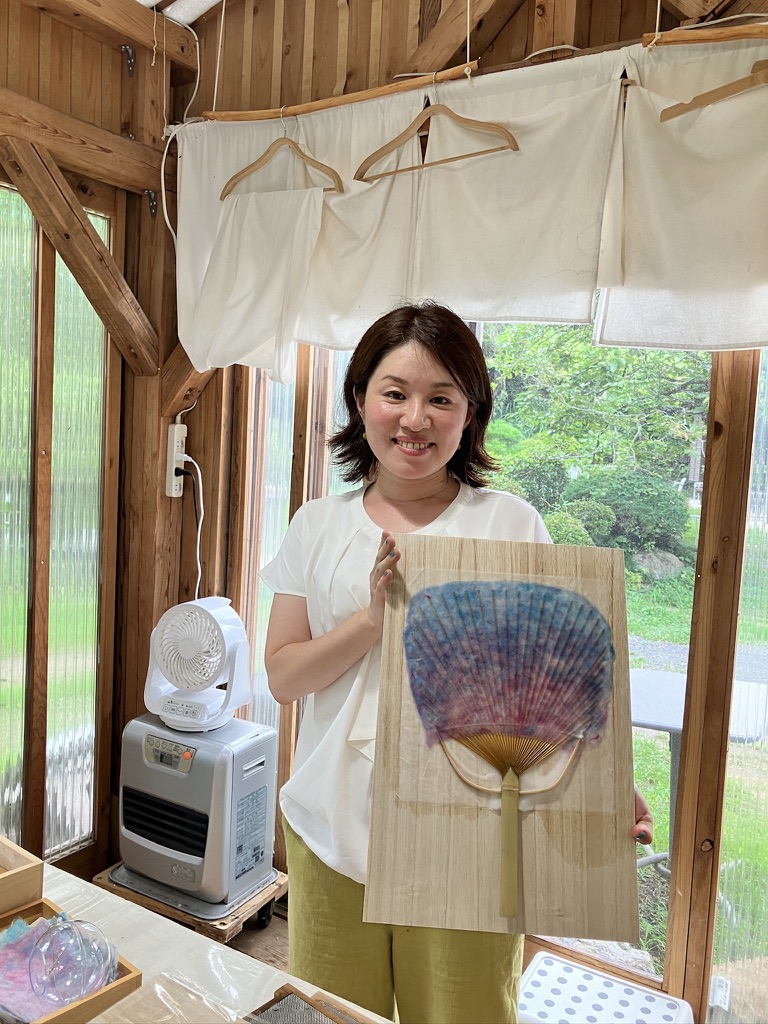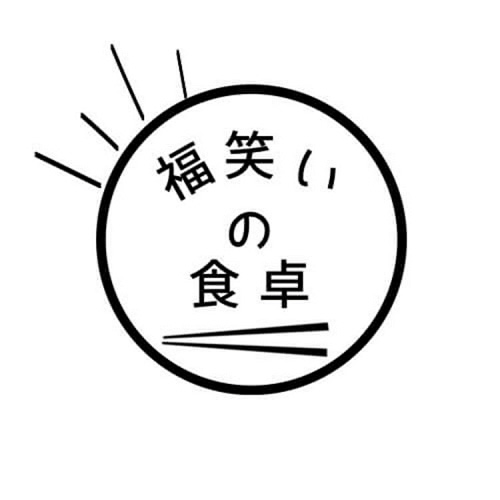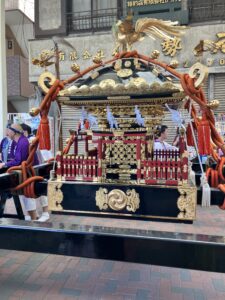I would like to introduce Japanese washi paper, which creates traditional Japanese beauty, such as shoji screens, calligraphy paper, and chiyogami decorative paper. I will also introduce workshops where you can experience making washi, so please read to the end.
What is Washi?
Washi is Japan’s traditional handmade paper, mainly made from the fibers of plants such as kozo (paper mulberry), mitsumata (edgeworthia), and gampi. It is more flexible and stronger than regular paper, durable even when thin, and has a unique texture.
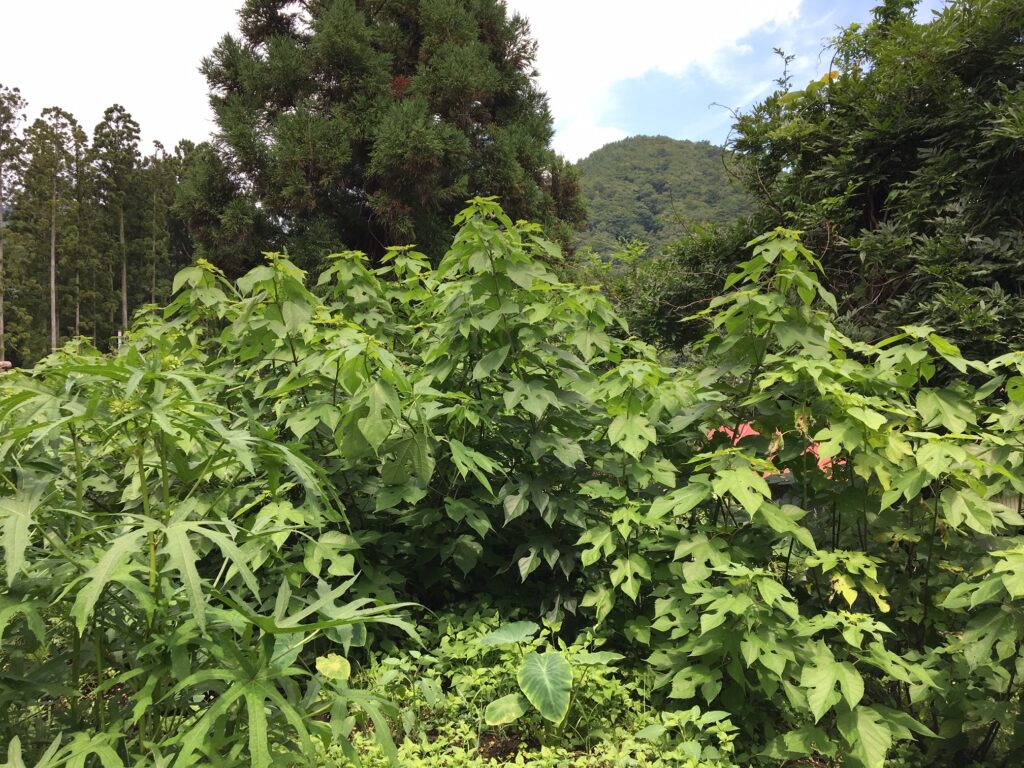
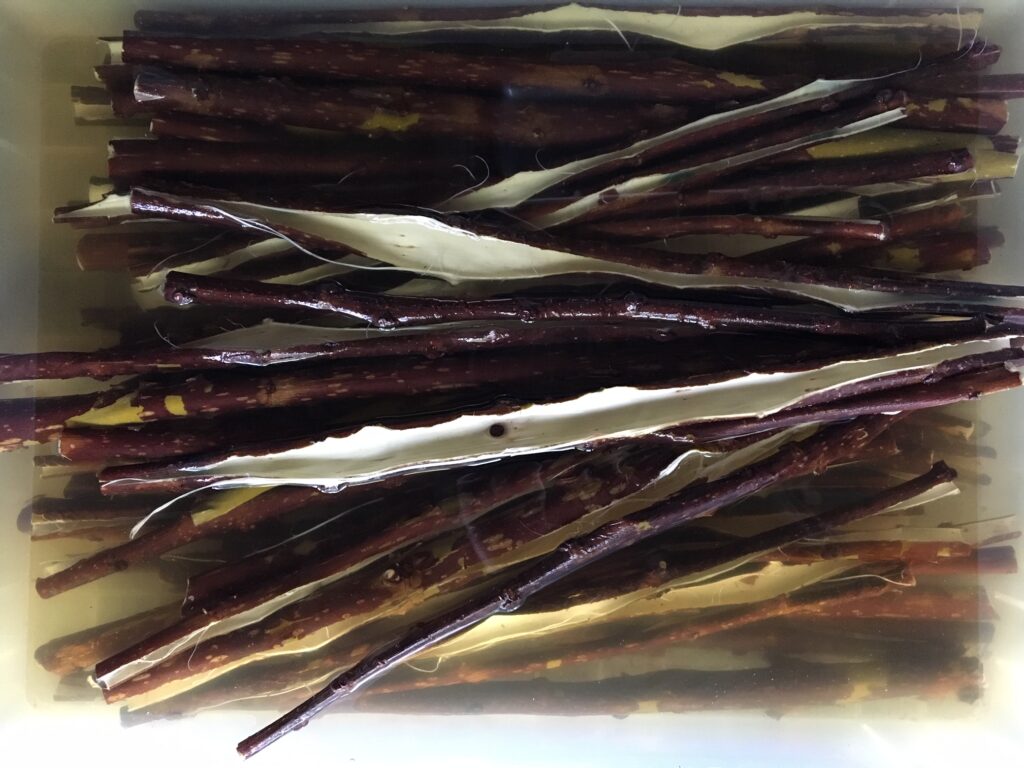
Washi is widely used in daily life and the arts. Additionally, its manufacturing process is registered as a UNESCO Intangible Cultural Heritage, reflecting its historical and cultural significance.

Washi Paper is Used in These Ways
Shoji
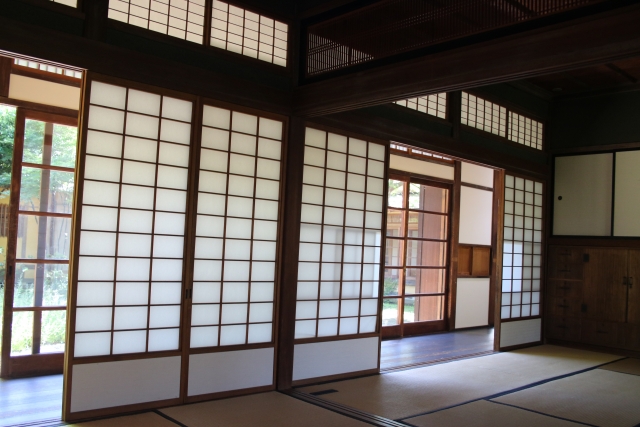
Shoji are sliding doors or windows made by attaching thin washi paper to a wooden frame. They allow light to pass through while blocking the view from outside. They serve the role of maintaining brightness in the room while protecting privacy.
Hanshi
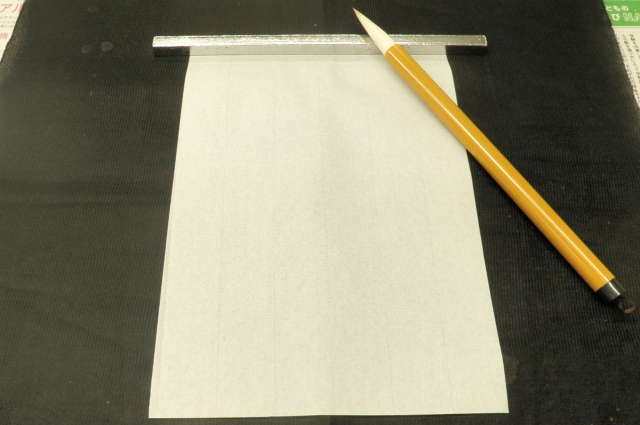
Hanshi is a traditional paper mainly used for calligraphy. Its size is roughly that of B4 paper. It is a type of washi that is relatively thin and highly absorbent. This makes it easy for ink to seep into the paper, making it ideal for writing characters or drawing.
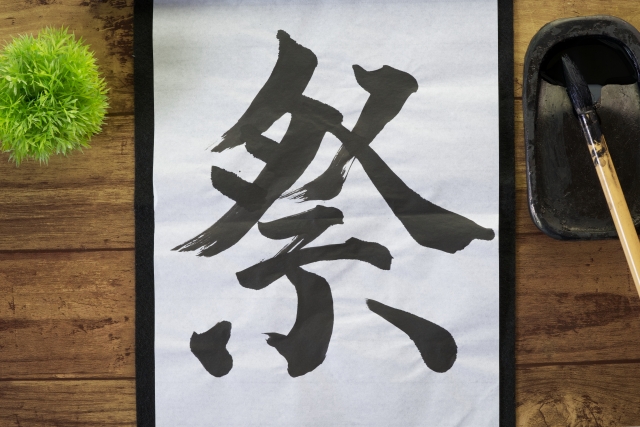
Lighting
Washi paper is also used in traditional Japanese lighting. Its soft texture gently diffuses light, creating a soft glow. Lighting made with washi brings a calm atmosphere to the space.
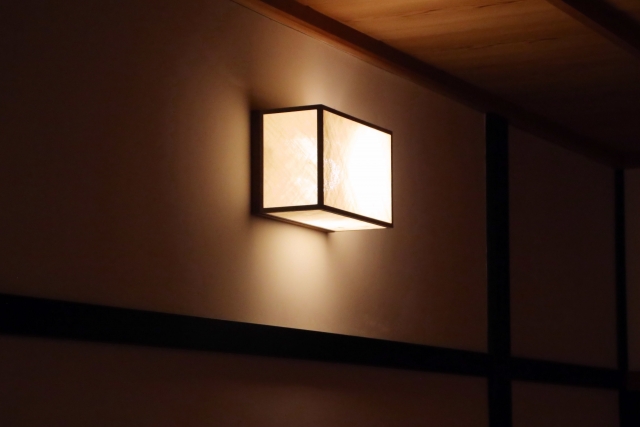
Chiyogami
Chiyogami, a type of traditional Japanese paper, is known for its vibrant floral patterns delicately printed on its surface. This beautifully designed paper is often used for wrapping gifts or crafting origami, adding a touch of elegance to everyday items.

Washi Tape
Recently, washi tape has become popular abroad. In Japan, it is called masking tape. It has a weaker adhesive, making it easy to remove after sticking. Many tapes feature cute or unique designs and are used to decorate gift wrapping or planners.
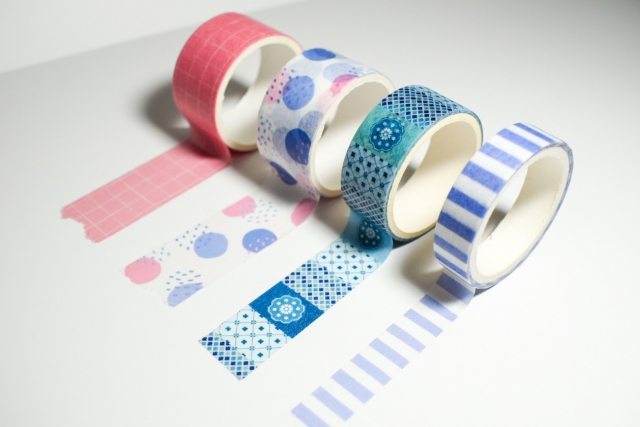
Production Regions
Washi can be divided into traditional hand-made one and industrially produced one. Hand-made washi is produced in small quantities, making it very rare and expensive.
There are several well-known regions for hand-made washi, such as Mino Washi from Mino City in Gifu Prefecture and Tosa Washi from Tosa City in Kochi Prefecture.
Join a Workshop
Introducing a workshop to enjoy Japanese Washi Paper.
We visited Hinode Washi, a studio located near the Akigawa Valley in Ome. The studio was established by Hideki Kunitaka, who moved to this area because it has many kozo(mulberry)trees, the raw material for washi. He built a workshop studio next to his home, where he promotes a new papermaking concept that suits modern lifestyles. His goal is to broaden the appeal of washi by offering a more casual approach to papermaking, rather than sticking strictly to traditional, rule-heavy methods.
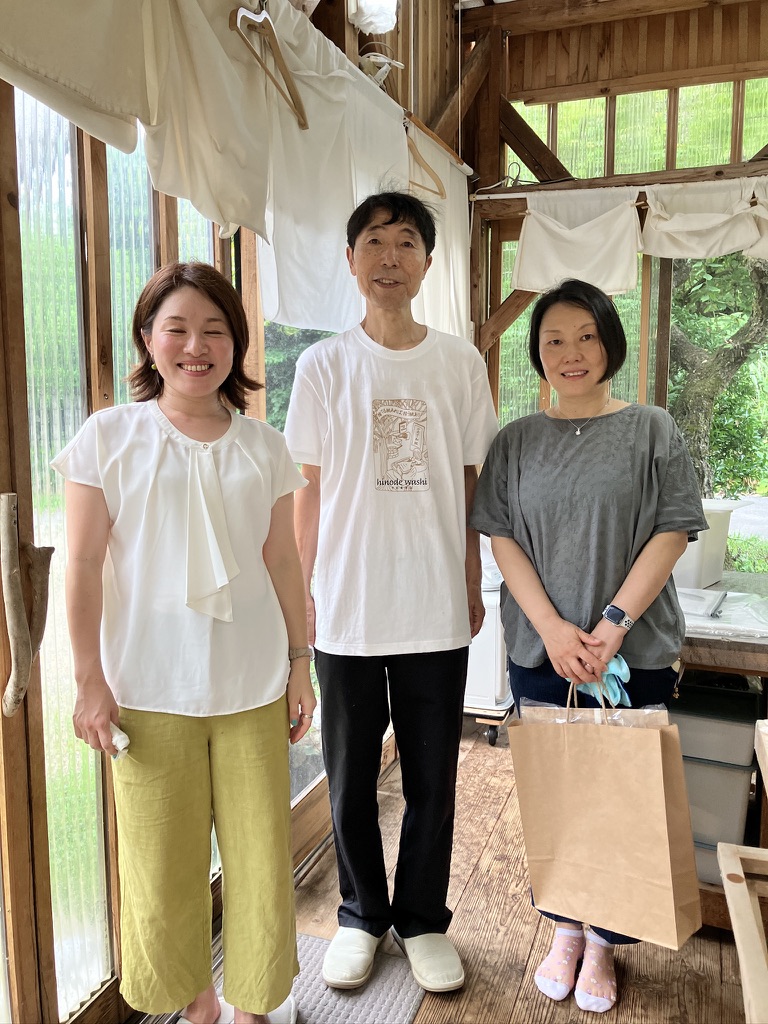
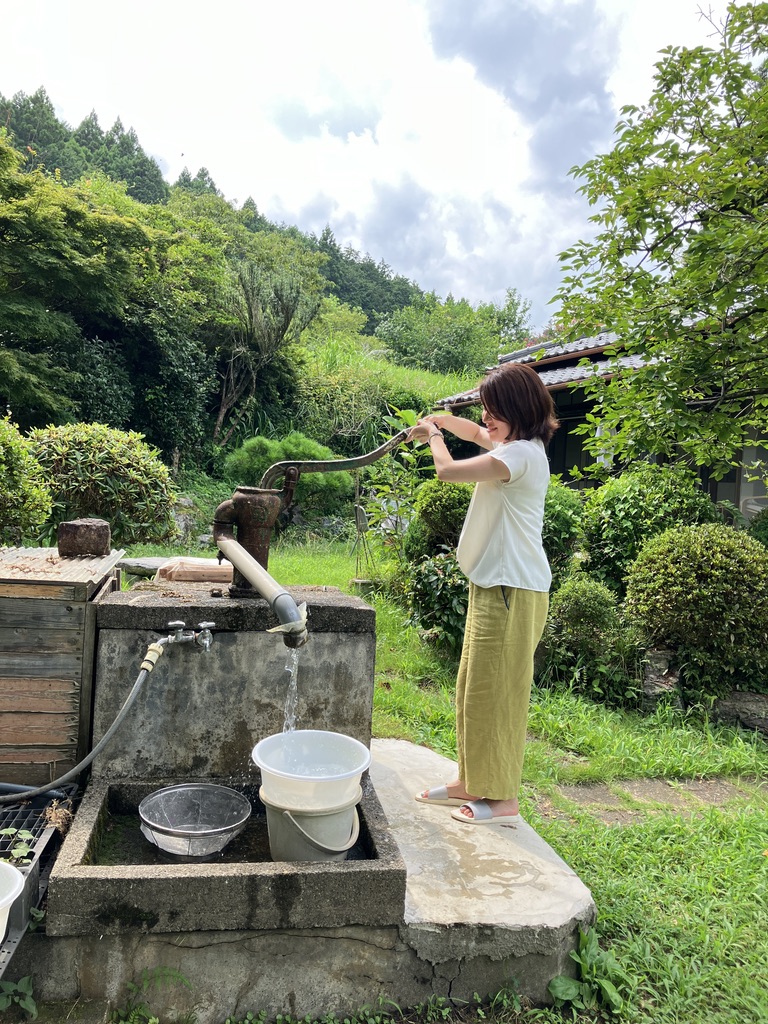
Hinode Washi is located in a place rich in nature, and the workshops use well water.
From the many workshop options available, we chose to make a uchiwa (Japanese fan).
After making washi material, We poured it into a wooden fan mold and added colors.
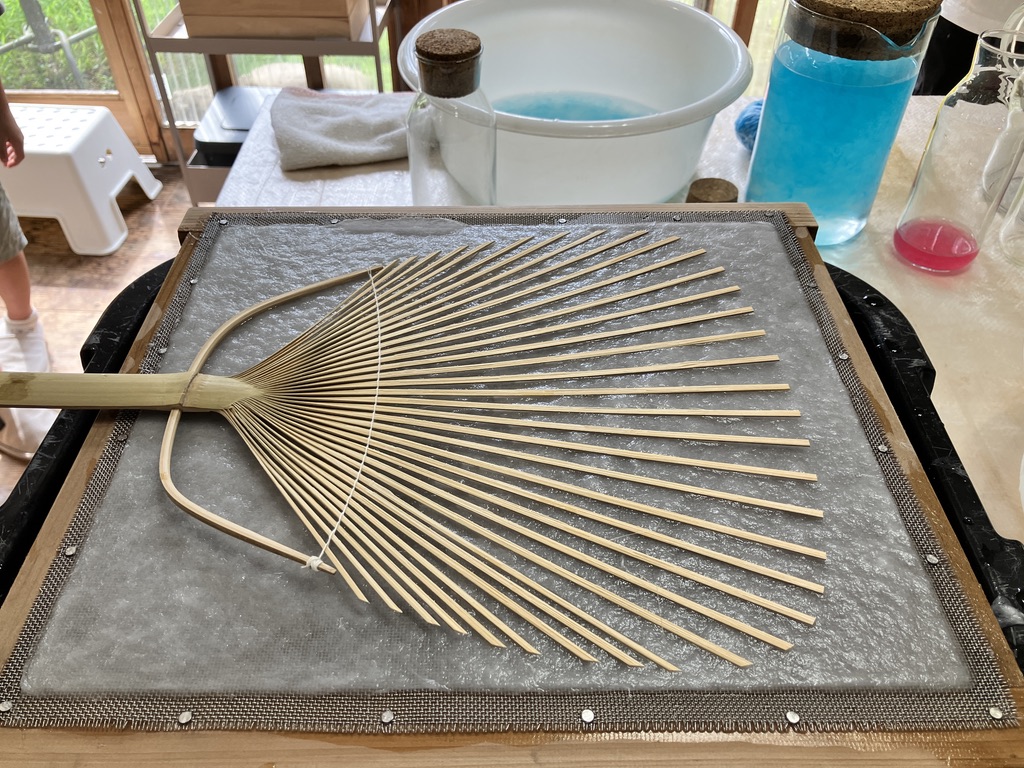
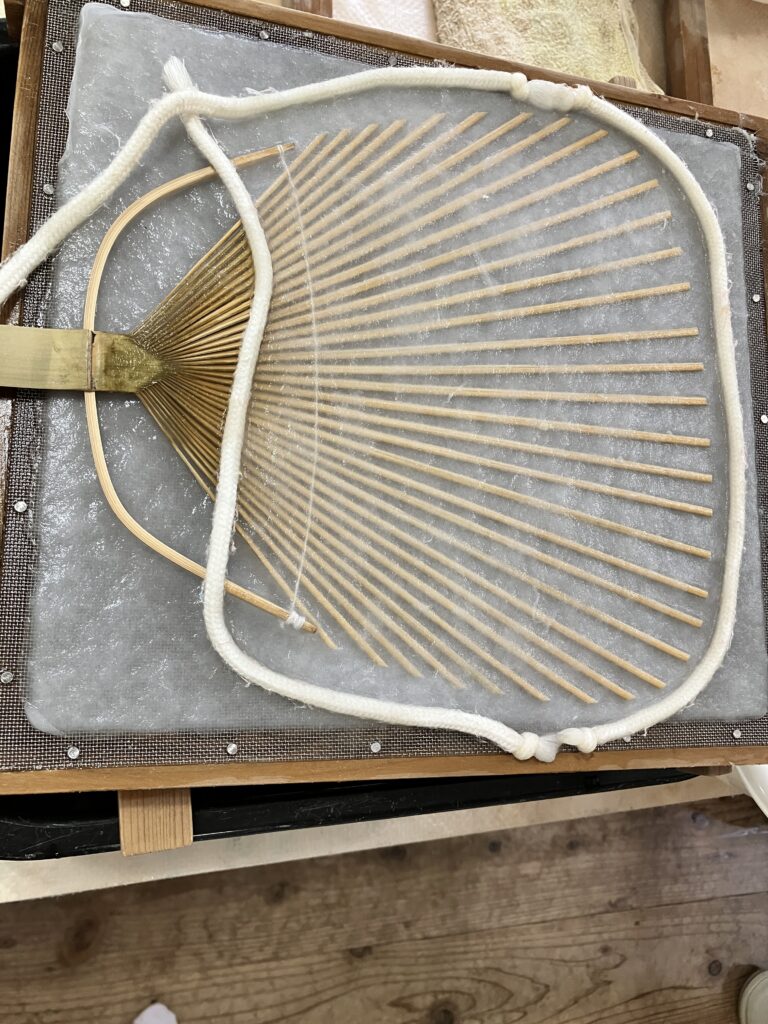
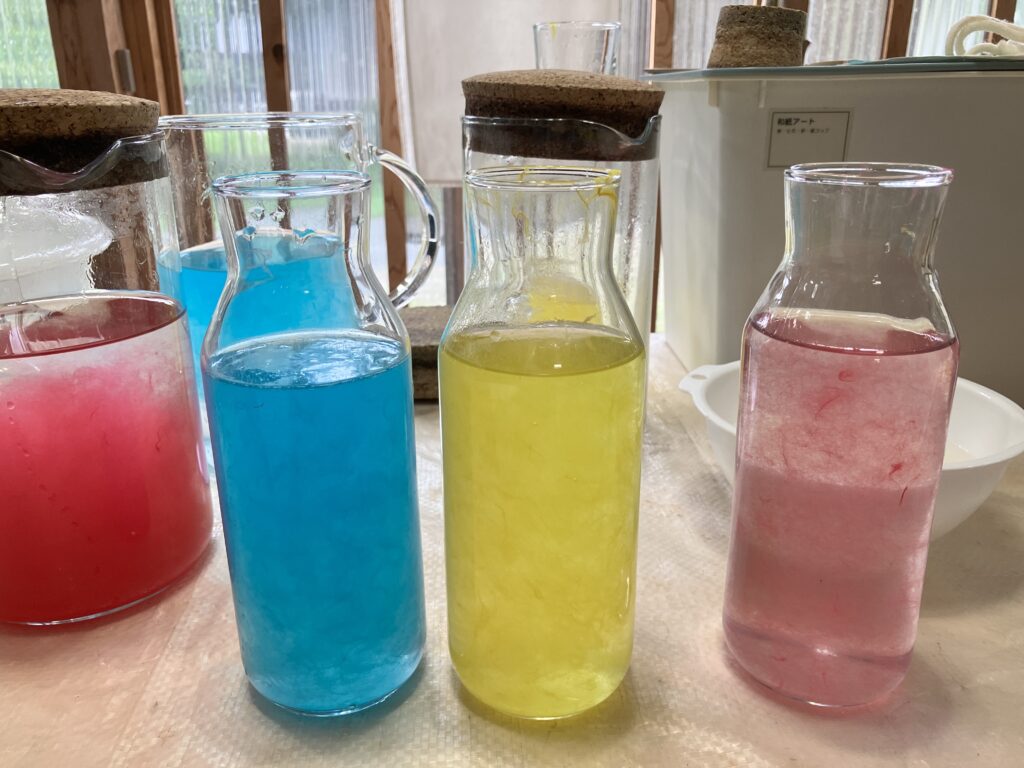
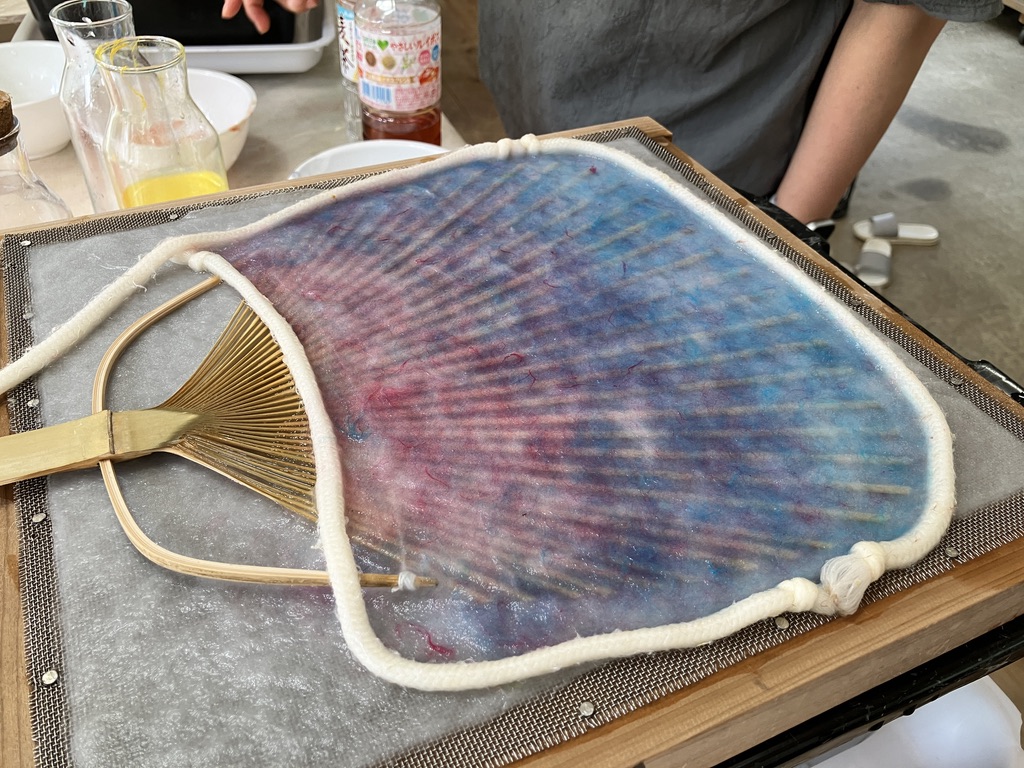
After three days of drying, the finished uchiwa turned out to be very durable, with uniquely beautiful colors.
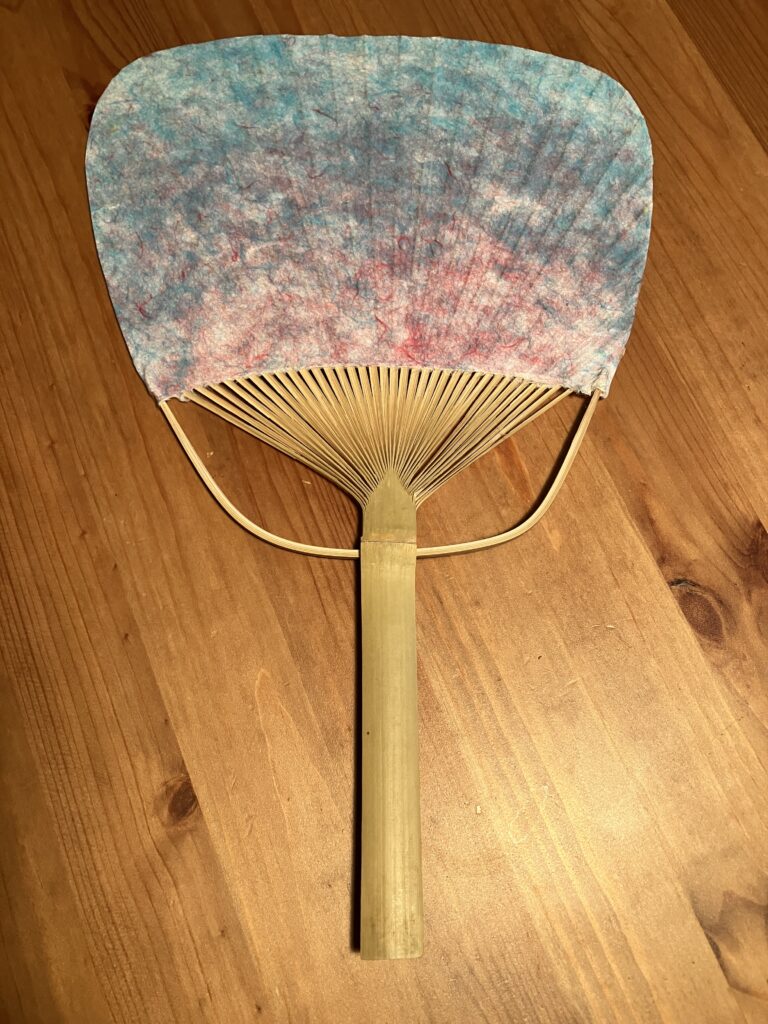
My friend made one with a completely different pattern from mine.
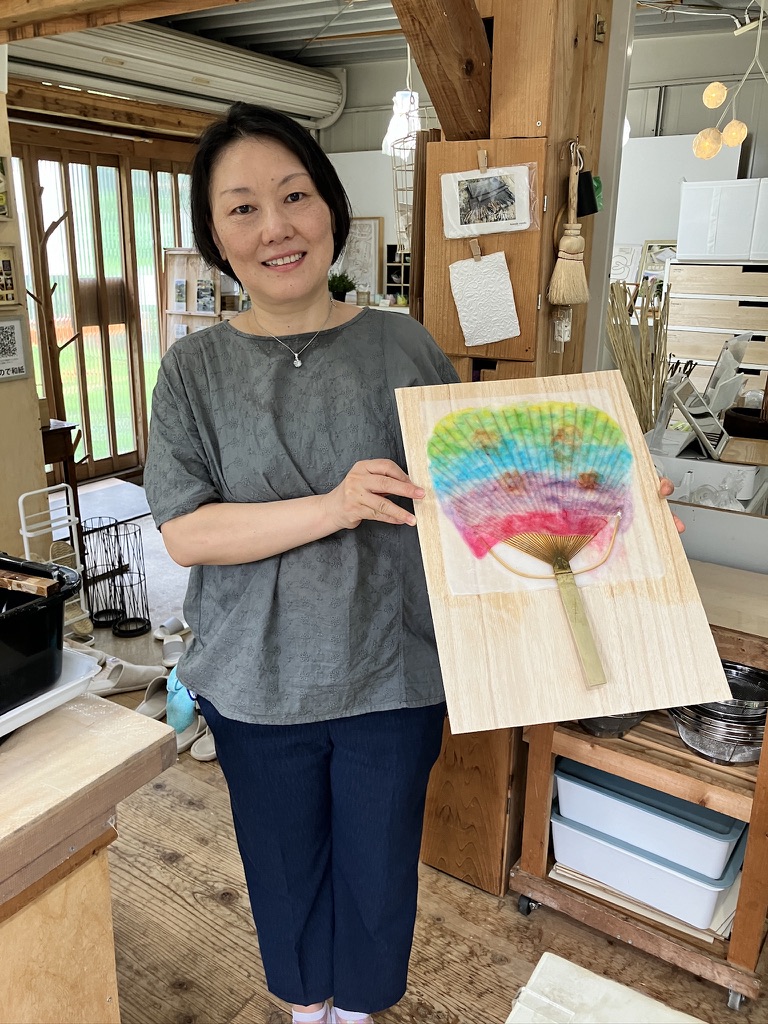
Hinode Washi is a wonderful place where you can experience various activities related to washi. The surrounding area features valleys and hot springs, allowing you to enjoy nature. I highly recommend visiting.
It takes about 1 hour from central Tokyo to the west side.Please check the directions here.https://hinodewashi.tokyo/activity_english.html

